Now that I have a deep understand of what does and doesn’t make for a good VR experience, I can go back to the ideas I outlined in my initial response post. Outlining what I think would work well about that scenario and what wouldn’t when considering the format, I need to produce (a one-minute 4K VR video).
:: My Ideas Synopsis ::
:: Scenario 1 ::
You awaken tied to a chair; your hands visibly bound to the wooden arms. You hear far away footsteps slowly approach, as your eyesight clears you see the scene before you. A grotesque tea party, mannequins smiling blankly, whispers of warning build in momentum as the footsteps grow closer. You feverishly work at your bonds, finally breaking free as you hear a creaking from behind. The door has opened, and your host has arrived.
Scenario 1 Synopsis
I think this idea has the potential to create a really engaging VR experience. The enhanced immersion that comes with the medium would really helps when creating stressful scene. I also think that this idea would really suit the use of directional audio; with the footsteps encroaching and whispered warnings coming from different directions the audio would really help make the experience as tense as possible. The idea would also demonstrate techniques used in VR well, by having the viewer tied to a chair you ground them. Likewise, by showing arms you embody the viewer in the scene. These are things that would help demonstrate my knowledge of VR in the final piece.
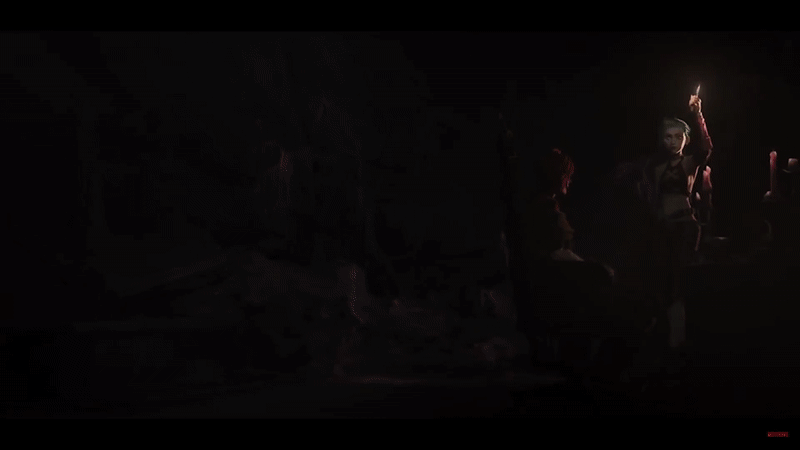
The drawbacks I see with this scenario is the scale of the project. If you look at the main reference I have for the environment, being the Arcane dinner scene (Netflix, 2021). There is a lot of demand for different and unique models to populate the scene.
Also, I am not sure how easy it is to source directional audio, something this scene very much calls for. There is also a large demand for directing the viewer, given how the video I produce is a demonstration of what I want the player to choose. Which if not done perfectly could make the final video seem jarring. If the player doesn’t want to struggle free of the chair for instance. The experience might potentially fall, robbing the viewer of their agency.
:: Scenario 2 ::
A roller coaster ride, passing through doorways to far away worlds. Sand dunes followed by snow-capped mountains. The sunken remains of Atlantis, followed by the flight deck of the Hindenburg. The viewer stays grounded within their cart, following visibly rails before them. But they are not alone, snarls and cries come from behind the viewer. A monster giving chase as we fly through the environments around us.
Scenario 2 Synopsis
I think this idea could make for a really effective VR experience. The shifting of environments working almost like a slideshow of different worlds yet grounded by the implementation of a platform and tied to together by having the viewer be chased through their journey.
The two main issues I see straight away however come in both scale and feasibility. The video produced is only meant to be one minute in length, so the rapid changing environment might change so quickly that the viewer is simply overwhelmed by the changing environments.
There’s also the risk of motion sickness, to make a digital roller coaster ride means pulling the viewer quickly through the different worlds. That could easily result in visual discomfort, and, while this can be countered by grounding the viewer in some kind of roller coaster cart it would still pose a large problem given how the viewer is likely to not be looking in the direction they are being pulled.
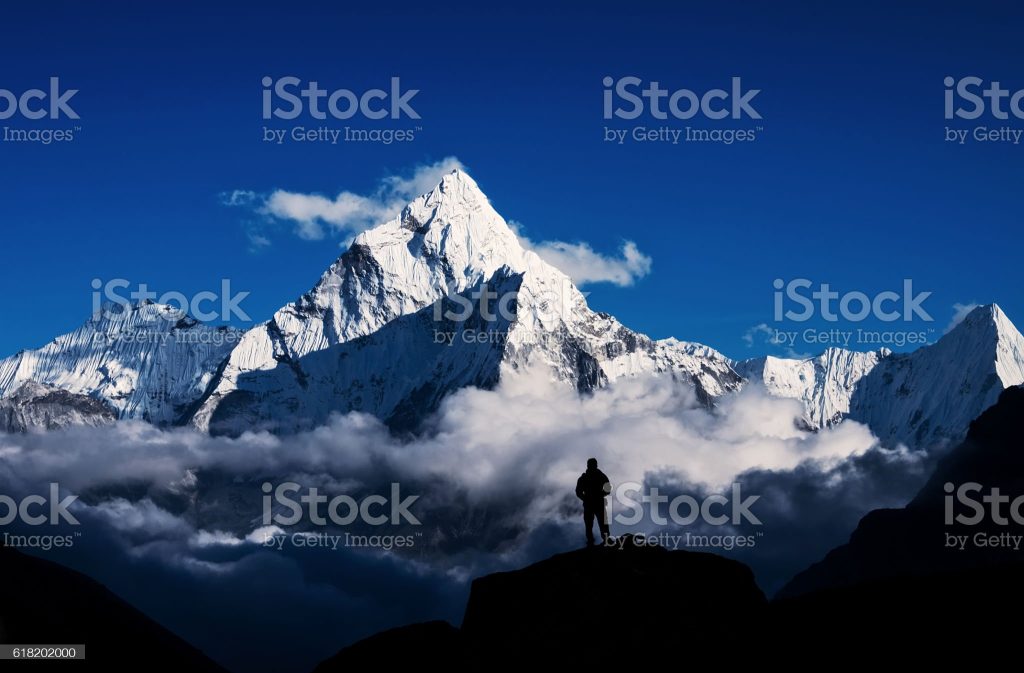
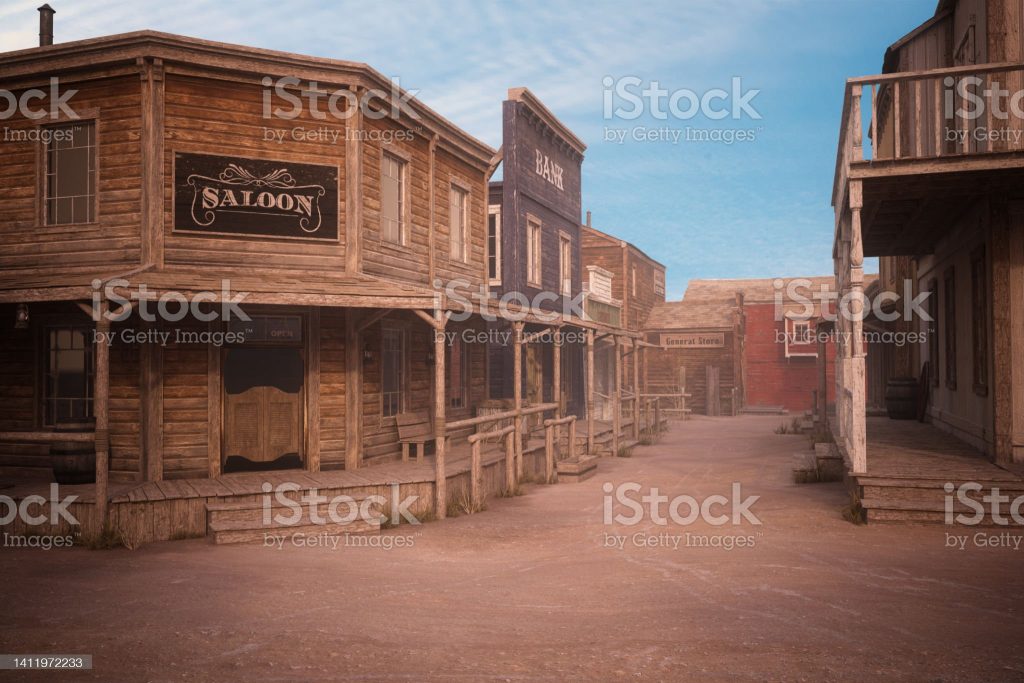
Finally, there’s also the technical realities of the project. Creating the different environments is a very large-scale project, even if the viewer is only looking at them briefly, they still need to be populated enough to give an immersive visual.
As a result of these issues, I think that this idea is not really something feasible given the timeline I must work with. The idea is nice and given enough time I think it could work well. But sadly, I don’t think the scenario something I can realistically pursue.
:: Scenario 3 ::
Our stage is a chessboard, checkers stretching as far as the eye can see. Vines cover our path, stretching over broken statues. A game frozen in play. Yet these are no ordinary game pieces, smiling young girls in Victorian garb play the pawns. Perfectly happy in their defined roles, the queen hidden behind a smiling mask orders her daughters to play their roles. The power behind the absent king. Commands are thrown by both sides, ordering their pieces to obey. And their number one target, clear under harsh spotlight, is you.
Scenario 3 Synopsis
I really like this idea for an environment. From a modelling perspective its fairly straight forward but with the clever use of audio compontants I think it could be a really compelling VR expereince. The viewer wouldn’t doesn’t move in this scenario but rather is the centre piece with the other actors playing around them which I think works very well in VR.
In terms of storytelling I would try to play on the theme of oppression in Alice in Wonderland. In that story wonderland is an escape from the expectations society at the time placed on young girls. I would incorporate this theme by adding voice lines to the various chess pieces. For example, the quenn could represent a mother telling their daughter how they should behave in proper company. Or the other pawns could whisper gossip like school children are prone to do. This would add interest to what would be a fairly dull visual alone.
I’m going to pursue this scenario idea first, because I don’t see much downside and I think the scene is the most uniquely suited to VR out of the three. There may be challenges that arise as I start production, and I will need to find a quick way to create various figures as modelling each chess piece from scratch individually takes this small scale idea and makes it an undertaking to great to achieve in my time frame.
:: My Environment Plan ::
Now that I have selecte the idea I want to persue I can begin with the pre production phase of the project. This included creating a greybox of the environment in Maya to give me a sense of scale and how the scene will appear visually when the camera is placed in the centre of the board.
:: Greybox ::
The greybox had somewhat limited impact with this particular environment as in terms of base shapes there wasn’t much call for them. Most of the time spent modelling will be done creating the characters to form the statues, so the visual wont really come together until these are implemented.
I did decide at this stage though that I needed to include something other than just a standard chess board to create a nice visual. A clean environment would appear dull, so instead I chose to cover the board in vines, which I would create using MASH. This could add interest, especially if I animated them as they grow and would help create a dirtied feel of the environment.
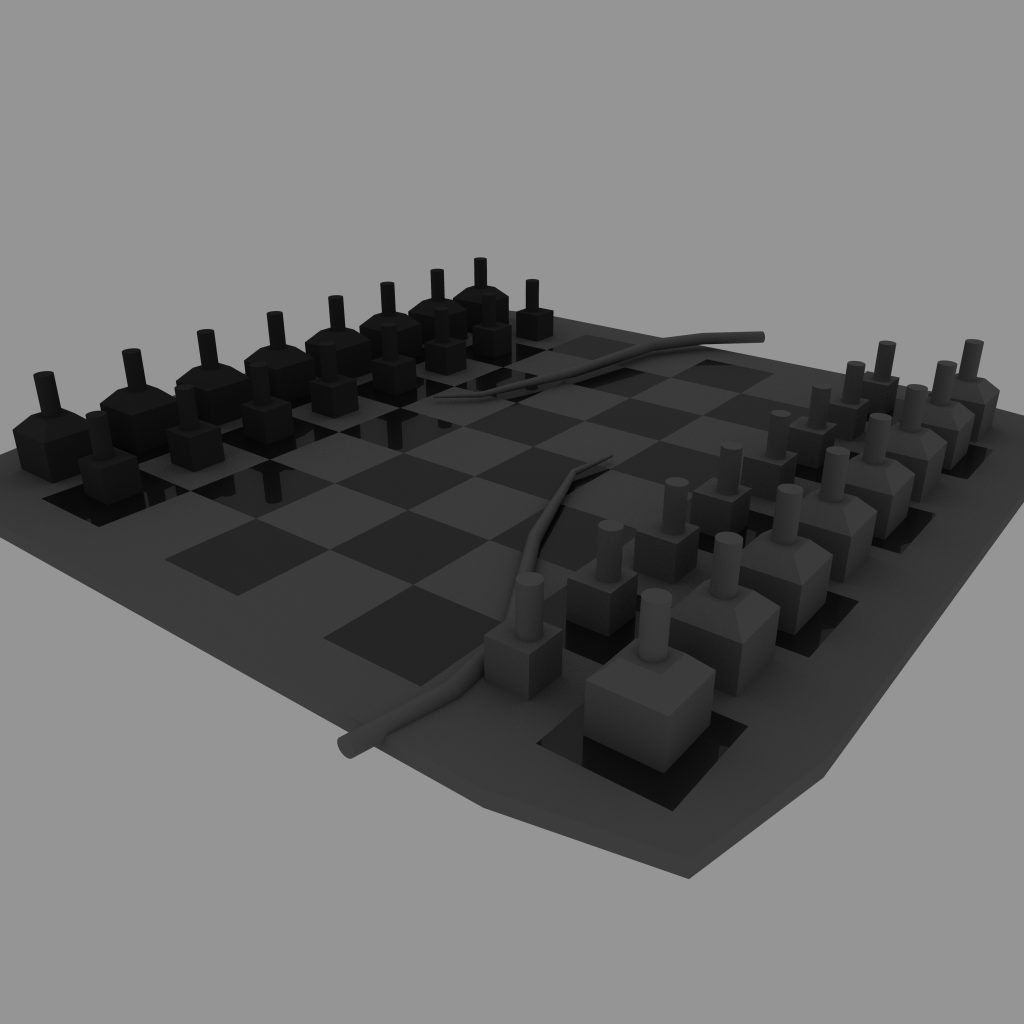

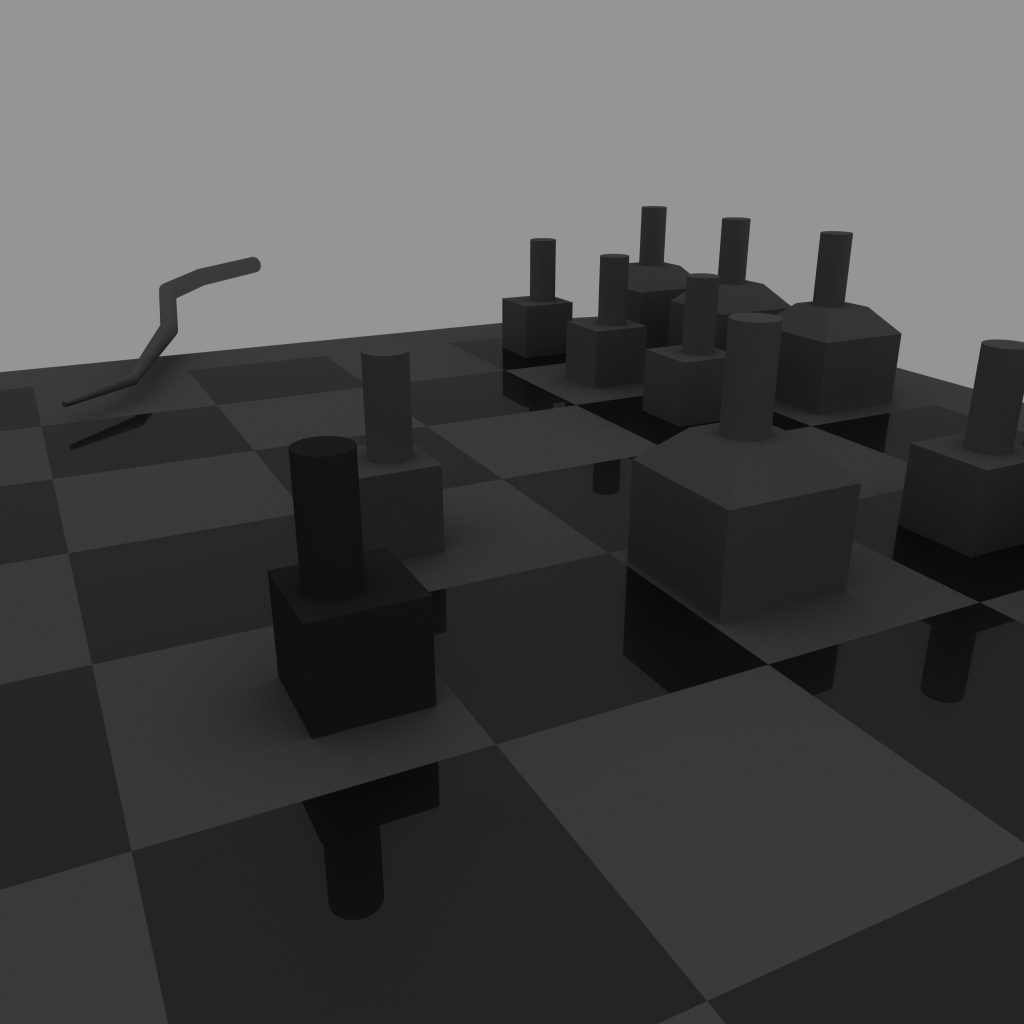
I also wanted to experiment with creating VR videos using Arnold within Maya. This was vital as it would tell me how the final design of the environment will work when converted to video. It was here I discovered a number of issues with creating video from Arnold.
The most notable issue I found with the frames Arnold produced was the amount of noise in the images. These frames were rendered at 4K resolution, as the assignment brief demands, yet in the final video the grainy images make the video hard to see even when viewing at 4K.
Now, this could almost certainly be rectified. I am very confident that there are various technical setting within the Arnold renderer that helps to reduce the amount of noise in the frames. This will simply need some more exploration after I had created the final environment.
:: Summary ::
In this post I have selected which of my three scenarios I am going to pursue. Justifying my decision before making my selection. I then gathered the references for the assets I will need to create and created a rudimentary grey box in order to demonstrate the final visual I will need to create. I have also shown some of the issues I have found creating VR sequences using Maya, which will need to be addressed once production is complete.
:: References ::
ASKA (2016) ‘Man hiking silhouette in Mount Everest,Himalayan stock photo’ [Online Image] Available online: https://www.istockphoto.com/photo/man-hiking-silhouette-in-mount-everest-himalayan-gm618202000-107493003 [Accessed 15/06/2023]
IanGoodPhotography (2022) ‘Empty dirt street in an old western town with various wooden buildings. 3D illustration. stock photo’ [Online Image]. Available online: https://www.istockphoto.com/photo/empty-dirt-street-in-an-old-western-town-with-various-wooden-buildings-3d-gm1411972233-461596842?phrase=wild+west+town [Accessed 15/06/2023]
The Monster You Created (2021) ‘Arcane’ Season 1, Episode 9. Directed by Pascal Charrue & Arnaud Delord. Written by Christian Linke and Alex Yee. [TV Programme] Netflix. 7 November 2021.